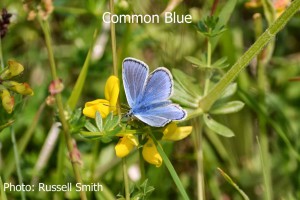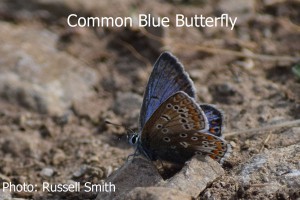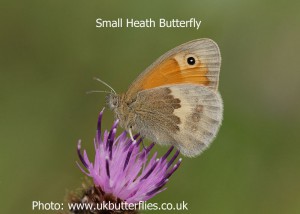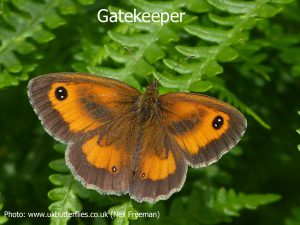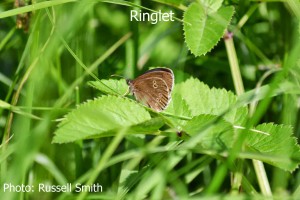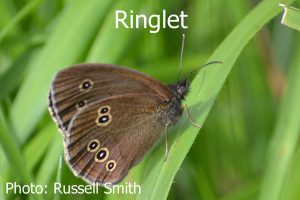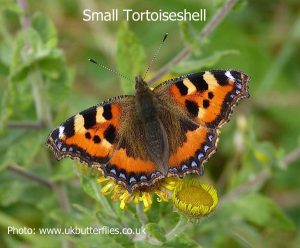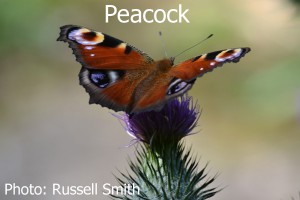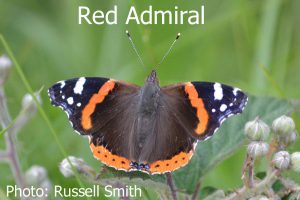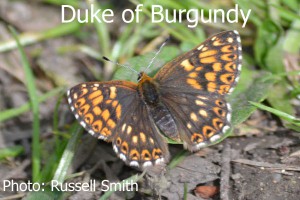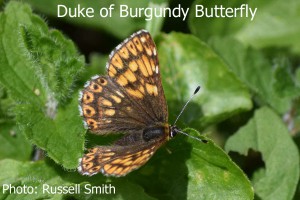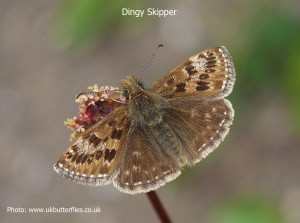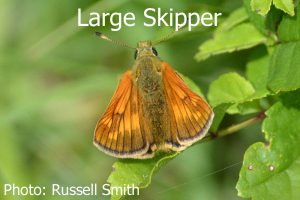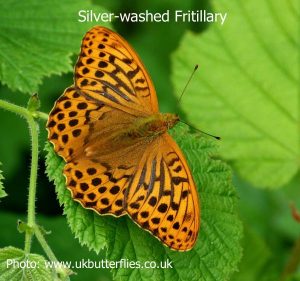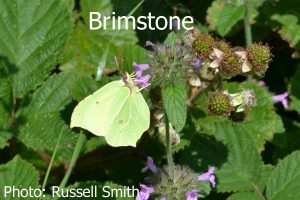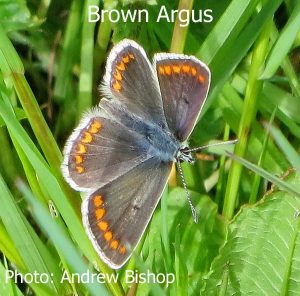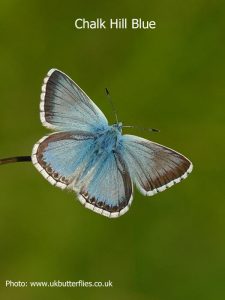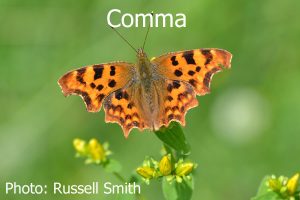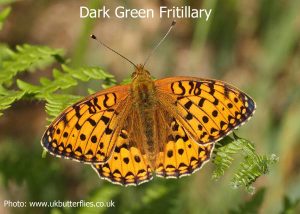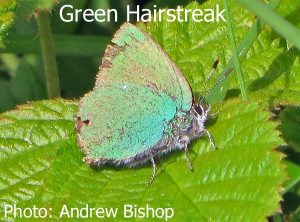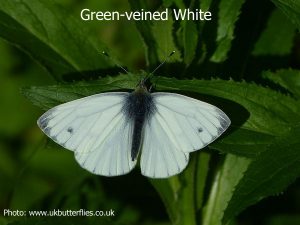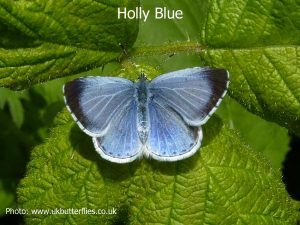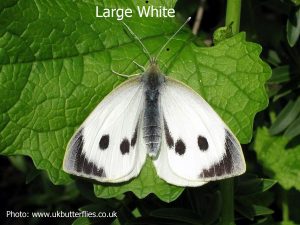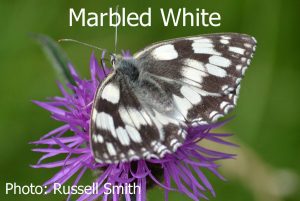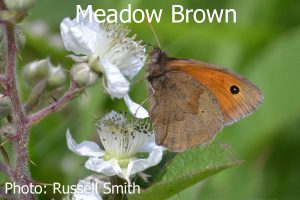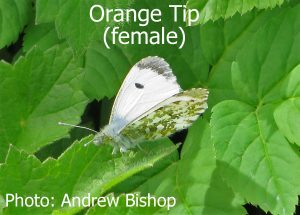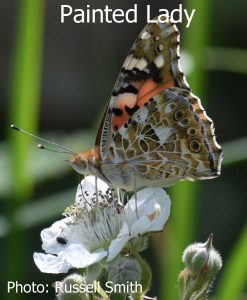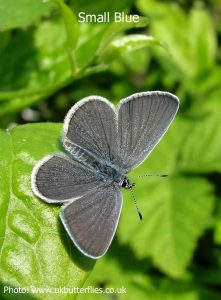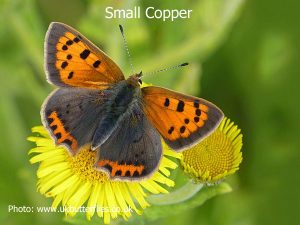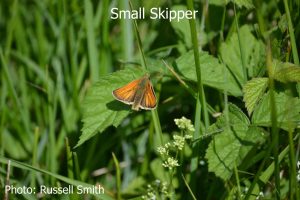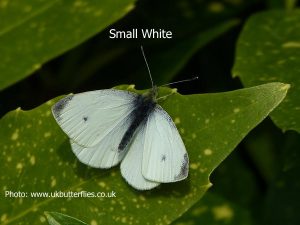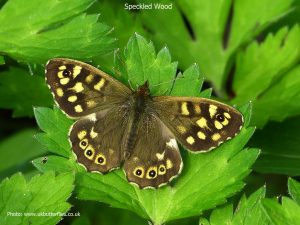A wide range of habitats such as unimproved natural limestone grassland, scrub, and woodland clearings/glades can be found on Leckhampton Hill and Charlton Kings Common. These habitats contain a variety of plants that not only provide nectar for butterflies but act as a larval food source for a large number of species. The information below highlights the species of butterfly that can be seen on the Hill and Common, along with their habitat, larval food source and flight periods – a few interesting facts are thrown in as well. We have concentrated on those species that can be seen most frequently and are most widespread during the spring and summer months. Photos of other species that can be seen on the Hill and Common are included at the bottom of the page.
If you would like to see some information on which butterflies, and their numbers, that have been seen on the Hill and Common during annual surveys please go to the Butterfly Surveys page.
Species: Common Blue
Habitat: Unimproved limestone grassland, and many other places where one of their larval food plants can be found – the commonest being Bird’s-foot Trefoil.
Flight Period: From mid-May to the end of June, and from the end of July to the beginning of September.
Interesting Fact: The caterpillar is sometimes attended by ants for its sugary secretions, and the chrysalis is buried by ants or found inside ants nests under stones. The adults roost communally by night on tall sheltered grass stems head down with 2-5 butterflies per stem. Both the caterpillar and chrysalis produce a tuneless song or long bursts of noise too soft for human ears, presumably to attract ants.
Others: Other ‘blue’ butterflies including Holly, Small and Chalkhill as well as Brown Argus are present. The latter can be mistaken for female Common Blues and vice versa.
Species: Small Heath
Habitat: Found in many different habitats, especially those that are more open, such as grassland where the adults prefer a shorter sward, and disused quarries and heathland. Larval food plants are grasses of which Fescues and Bents are favourites.
Flight Period: From mid-May to mid-September.
Interesting Fact: Because some caterpillars develop much more quickly than others, adults can be seen almost continually throughout the flight period rather than in distinct generations.
Species: Gatekeeper
Habitat: Field edges, along hedgerows, scrubby grassland and country lanes. The larval food plants are medium to tall meadow grasses in sunny sheltered positions.
Flight Period: From the beginning of July to the end of August.
Interesting Fact: It’s other name, Hedge Brown, indicates its preference for scrub and woodland edges, seldom settling on the ground.
Species: Ringlet
Habitat: Mainly grassland that is sheltered, shady and damp. The larval food plant is probably Cock’s-foot grass, but it is not known exactly which species of tall native wild grasses are eaten.
Flight Period: From mid-June to the end of July.
Interesting Fact: The caterpillars feed on the top of grass blades after dark.
Others: Other ‘brown’ butterflies include the Marbled White, which is the most distinctive and easiest brown to identify, whereas the Meadow Brown, with scalloped edges to the hind wing, can be mistaken for the slightly smaller Ringlet with its fine white fringe. These 3 species are the most abundant on the Hill during their respective flight periods whereas the Speckled Wood with its creamy yellow patches on a dark chocolate background is present in low numbers for most of the season.
Species: Small Tortoiseshell
Habitat: Can be found almost anywhere but it is often seen where nettles (a larval food source) grow on field margins.
Flight Period: Any time between mid-March and mid-October, with peak population from mid-June to the beginning of September.
Interesting Fact: Adults emerging in August only feed prior to hibernation and do not breed until the following year.
Species: Peacock
Habitat: This butterfly turns up almost anywhere given the broad distribution of its larval food plant, stinging nettles.
Flight Period: From the end of March to the end of May and from mid-July to the end of August.
Interesting Fact: It has two forms of disguise: when observed from some angles the “eyes” on the upper side of the hind wing assume the appearance of a Little Owl while the body looks like a beak. The underside is camouflaged by resembling bark and, when disturbed, the butterfly flashes the wings open simultaneously rubbing the fore and hind wings together to produce a warning noise to frighten off any potential predator.
Species: Red Admiral
Habitat: Found in almost all habitat types. Larval food plant: Stinging Nettles
Flight Period: From April to October.
Interesting Fact: The caterpillars live hidden in a tent of one or several leaves folded over and fastened together with silk. Most adults seen early in the spring are migrants from the Mediterranean as they seldom survive a British winter.
Others: Other ‘aristocrats’ that might be seen include the Painted Lady the first of which seen each year are migrants, but subsequent generations breed here using thistles as the larval food plant. Also, Commas with their jagged wing edges and the white ’ (comma) on the underside can look like dead leaves when at rest with their wings closed.
Species: Duke of Burgundy
Habitat: Frequents scrubby grassland and sunny woodland clearings where the larval food plant, mainly cowslips in Gloucestershire but occasionally primrose, are sheltered and partly shaded by taller vegetation.
Flight Period: From the beginning of May to mid-June.
Interesting Fact: This is the only European representative of a family known as ‘Metalmarks’, evidenced by the distinctive clear cut band of white marks running parallel down the underwing. Males are territorial, darting out from perching posts on scattered scrub to chase off all rivals whenever any insects pass by.
Species: Dingy Skipper
Habitat: Found in warm open areas such as south facing chalk and limestone grassland/downland, open hillsides and abandoned quarries where the larval food plants Bird’s-foot Trefoil and sometimes Horseshoe Vetch thrive.
Flight Period: From the end of April to the end of June
Interesting Fact: Both the swift, whirring flight and the overnight resting habit of draping wings around dead flowers or grass heads are very moth like. During the day it tends to bask on bare ground for maximum heat absorption.
Species: Large Skipper
Habitat: Found in sheltered areas of grassland, where grasses grow tall. This typically includes meadows, hedgerows, roadside verges and woodland rides where the larval food plant Cock’s-foot grass grows.
Flight Period: From the end of May to the beginning of August.
Interesting Fact: In the morning, males patrol areas trying to detect emerging females, and then around midday they establish prominent perching posts in sunny corners from which they make sorties after passing females.
Others: Other Skippers found on the Hill are the Small and Essex Skippers which are both resident but can only be identified at rest due to their similarity of size and colour. The latter are distinguished by the jet black tips to the antennae.
Species: Silver-washed Fritillary
Habitat: Most commonly found in woodland clearings where the larval food plant the Common Dog Violet grows. This butterfly can also be found flying along country lanes and more open countryside.
Flight Period: From the beginning of July to the end of August.
Interesting Fact: The adults spend long periods in tree-tops drinking aphid honeydew as well as taking nectar from bramble and other flowers. The beautiful courtship flight incorporates a loop-the-loop.
Others: The only other fritillary that might be seen is the Dark Green, which prefers a more open grassland habitat with scattered scrub or woodland edge.
Other Butterflies
Other butterflies that have been seen on Leckhampton Hill and Charlton Kings Common previously are shown below:
